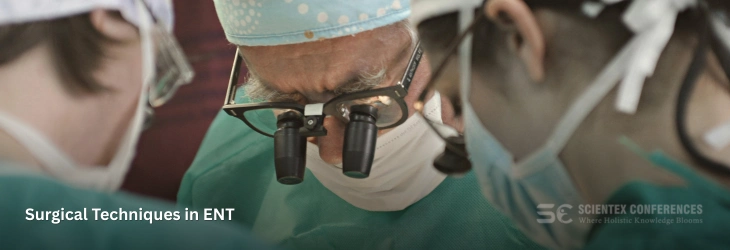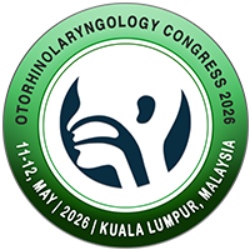Track: Surgical Techniques in ENT

Session Overview:
This session aims to provide an in-depth overview of surgical techniques in ENT (Ear, Nose, and Throat), focusing on the latest methods used to diagnose and treat a wide range of disorders affecting these interconnected areas. It will cover both traditional and minimally invasive procedures, including endoscopic surgeries, microsurgeries, and laser techniques, highlighting their indications, benefits, and potential complications. The session will also emphasize the importance of precision, anatomical knowledge, and technological advancements in improving surgical outcomes.
Recent Developments:
Recent advancements in understanding and managing surgical techniques in ENT have revolutionized patient care through the integration of minimally invasive and precision-based approaches. Innovations such as high-definition endoscopy, image-guided surgery, and robotic-assisted procedures have enhanced visualization and accuracy during complex surgeries. Laser technology and ultrasonic devices now allow for more precise tissue removal with reduced bleeding and faster healing. Additionally, advances in biomaterials and 3D printing have improved reconstructive options following ENT surgeries.
Sub Tracks:
Endoscopic Sinus Surgery (FESS):
Functional Endoscopic Sinus Surgery (FESS) is a minimally invasive procedure used to treat chronic sinusitis by removing blockages and improving sinus drainage. It uses a nasal endoscope to allow surgeons to operate through the nostrils without external incisions, reducing recovery time and complications.
Tympanoplasty:
Tympanoplasty is a surgical procedure to repair a perforated eardrum or reconstruct the small bones of the middle ear to restore hearing. It aims to improve hearing and prevent recurrent ear infections by closing the eardrum defect.
Mastoidectomy:
Mastoidectomy involves the removal of infected air cells within the mastoid bone located behind the ear, often due to chronic ear infections. The surgery helps to eradicate infection, relieve pain, and prevent complications such as hearing loss or intracranial spread.
Microlaryngoscopy:
Microlaryngoscopy is a delicate surgical procedure using a microscope and specialized instruments to examine and treat disorders of the vocal cords and larynx. It is commonly used for biopsy, removal of lesions, or vocal cord surgery with high precision.
Septoplasty:
Septoplasty is a surgical procedure to correct a deviated nasal septum, which can cause nasal obstruction and breathing difficulties. The surgery straightens the septum, improving airflow and often relieving chronic nasal congestion.
Coblation Tonsillectomy:
Coblation tonsillectomy uses radiofrequency energy to gently dissolve tonsil tissue at relatively low temperatures, reducing pain and swelling compared to traditional methods. This technique offers faster recovery and less postoperative discomfort.
Laser Microsurgery:
Laser microsurgery in ENT uses focused laser beams to precisely remove or treat abnormal tissue in delicate areas like the vocal cords or sinuses. It minimizes bleeding and damage to surrounding tissues, allowing for faster healing.
Robotic-Assisted Surgery:
Robotic-assisted surgery utilizes advanced robotic systems to enhance the surgeon’s precision, dexterity, and visualization during complex ENT procedures. It is especially useful for accessing difficult-to-reach areas such as the base of the tongue or skull base tumors.
Image-Guided Sinus Navigation:
Image-guided sinus navigation is a technology that uses real-time imaging to guide surgeons during sinus surgery, improving accuracy and safety. It helps avoid critical structures such as the eyes and brain, reducing the risk of complications.
Scientific Highlights
- Anatomical and Physiological Disorders of ENT
- Lung Disease Airway Issues
- ENT Infections and allergies
- New treatment Advances in Otolaryngology
- Ear & Nose plastic surgery
- Endoscopic and laparoscopic ENT surgery
- Craniofacial & Facial surgery
- Otology and Neurotology
- ENT Microsurgery
- COVID 19 and ENT
- Pediatric Otolaryngology
- Speech and Swallowing Disorders
- Head and Neck Surgery
- Airway Management & Surgery
- ENT Allergies & Immunotherapy
- Surgical Techniques in ENT
- Nasal Polyposis and Biologic Therapy
- Advances in Cochlear Implants
- Recent Advances in Otorhinolaryngology
- Vertigo and Balance Disorders


